Westland WS-51 Dragonfly multipurpose helicopter
The first flight of the Westland multipurpose helicopter “Widgeon”, which became an improved version of the Westland-Sikorsky WS-51 Dragonfly helicopter, took place on August 23 1955 of the year. This model was distinguished by an enlarged cabin on the 5 man, which could take orally and stretcher patients, blades of increased length and increased to 454 kg with a load-carrying capacity. The helicopter could be used in various forms: search and rescue, passenger, transport, medical evacuation. This model was the last reincarnation of the Sikorsky S-51 helicopter, manufactured in the UK under license from Westland.
It is worth noting that Sikorsky S-51 has become a real salvation for the American company. Already after World War II, the situation of the revived Sikorsky company in 1943 became again unstable. The end of hostilities reduced the orders of firms to a minimum. While in 1944, she launched the 144 helicopter, and in 1945, the 275 machines, by the beginning of 1946, the conveyor company in Bridgeport almost stood up. It was necessary to undertake something urgently, as it happened with the successful development of the S-38 seaplane. It was necessary to create some kind of new car.
Although numerous military applications were found for Sikorsky S-47, S-48, and S-49 helicopters in which they were indispensable, the leadership of the American armed forces doubted the appropriateness of allocating relatively scarce post-war funds for such aviation technique. In addition, not the most brilliant characteristics of the first helicopters, especially their carrying capacity and flight speed, did not contribute to their widespread distribution. Things with civilian orders were exactly the same. Advertising offered to use helicopters in numerous peaceful areas, but businessmen of those years were in no hurry to spend their money on unusual aircraft, more expensive and complicated to maintain and pilot than traditional planes. And the reliability of the first helicopters then left much to be desired.
In order to conquer the market in the fight against the main competitors, the Sikorsky Company in these difficult conditions in February 1946 created the S-51 helicopter. History creating this machine is very characteristic. With the cancellation at the end of the Second World War, all orders in the company formed a reserve for the construction of at least 35 two-seater S-48 helicopters. There was no hope that the US army would buy these helicopters, and the potential customers of similar products at that time were skeptical of a highly specialized military helicopter with a close cockpit. It was at this time that Sikorsky had the idea to use the power plant, transmission, screws and other things from the S-48, creating a new fuselage for them, which has more capacity. Such a step would significantly expand the use of rotary-wing machines. The use in the development process of ready-made and finished parts and parts not only cheapened and accelerated the development process of the helicopter, but also made it very attractive to potential buyers.
Alteration of the helicopter at the firm "Sikorsky" started in October 1945 of the year. Although the company's specialists, to increase the purchasing attractiveness of the helicopter, said that they had only changed the cabin, in fact there were significantly more rework in the helicopter. S-51 was still a new helicopter, and not a deep modification of its predecessor, as evidenced by the new model designation. The first flight of the helicopter, on which many hopes were laid, took place on February 16 1946. In the air, the aircraft raised the company's chief-driver, D. D. Wiener, Sikorsky's nephew, who helped him, as a teenager, to build an S-29A helicopter. As mentioned above, in the first place, Sikorsky redid the cockpit of a helicopter. Instead of a two-seater, she now appeared four-seater. The pilot was now sitting in the front seat, and immediately behind him along the bulkhead, which separated the cab from the engine compartment, a three-seat sofa was installed. Cabin comfort has been significantly improved. For example, in order to prevent the windows from misting up in flight, they were blown with warm air from a gasoline heater, which was installed under the cabin floor. To ensure the necessary heating, it was decided to divide the large windshield with partitions. The pilot's door was located on the right side, and the sliding door for helicopter passengers was on the left. The expansion of the cockpit was the cause of the subsequent alteration of the central part of the helicopter’s fuselage, and then its tail boom. At the same time, the entire fuselage of the rotary-wing machine seems to have “recovered”. The plating of composite materials was replaced by aluminum. A monocoque tail boom entirely made from alclade.
At that time, the American helicopter industry has already mastered the production of long tubular spars of variable cross section, which were used in the blades of S-51. The diameter of the rotor has increased from 14,63 meters to 14,93 meters. In 1950-ies, Sikorsky Erkraft developed all-metal blades for both the carrying and steering screws. On some machines, two-bladed larger-diameter tail rods were installed. All the adopted innovations contributed to the growth of reliability and increase in the resource of parts and parts of this helicopter that soon found a very wide use. The helicopter S-51 was significantly modified control system. Sikorsky always paid a lot of attention to improving the performance of the rotary-wing machine, trying to simplify the work of the pilot as much as possible. In 1950-s, various types of stabilizers were tested on a helicopter, for the first time an experimental model of a gyrostabilizer was mounted, and then a full-fledged autopilot.
Then Sikorsky decided to use a new chassis. Which remained tricycle, but the main wheels were moved back. In this case, the caster nose wheel was placed in a riveted fairing. As with the S-48 helicopter, the use of a float landing gear was also foreseen, with the floats attached to the usual wheels. However, the floats in flight created a lot of resistance and in the future they decided to replace them with inflatable rubber rings, which were mounted on the landing gear. When an emergency occurred, the rings inflated, turning into balloons - donates (bagels), which rather reliably kept the helicopter in calm water. A significant drawback of the S-51 helicopter was the absence of a safety support on the tail boom, which in some cases resulted in damage to the steering rotor during the landing of the machine with a large tailing angle. On the latest modifications of the S-51, this flaw was eliminated. The S51 helicopter managed to become multi-purpose, eventually becoming a good “workhorse”. The car was inferior to Bell-47 according to the criteria of price and operating costs, but exceeded in capacity and carrying capacity. Next to the Bell-47, the S-51 helicopter looked like a cool limousine in front of a rustic jeep.
In this case, the helicopter went to Albion. In 1947, British European Airways organized a pilot helicopter compartment with three S-51 helicopters. For two years, helicopters drove mail day and night in the eastern part of England, and the winter operations of the 1948 in winter were the first truly instrument flights. To do this, American cars additionally equipped with the necessary flight-navigation equipment. In 1950, this airline for the first time in the world began to carry out regular passenger transport by helicopter, linking Liverpool, Cardiff and Urekshem, and then the central airports of the country. In 1954, regular passenger flights began to run between Heathrow Airport and the center of London. The S-51 helicopters are widely used as ambulance helicopters, in search and rescue, in the police, as well as in agricultural operations. For example, in Argentina, these machines fought against the invasion of locusts, in South Africa they were used to destroy Tse-Tse flies, and in Australia they fought bark beetles.
In addition, it was possible to conduct aerial photography from the helicopter, perform mapping, conduct ice reconnaissance, control oil and gas pipelines, forests, and even reconnoiter fish shoals. At the same time in the US, the helicopter found wide use in the police. The American police quickly assessed the merits of the helicopter as an ideal means for controlling traffic, as well as fighting crime. The S-51 helicopter, along with the Bell-47, marked the beginning of the successful civilian use of such technology. Interested in the helicopter and the US military, who purchased 11 machines that received the index R-5F (with 1948-th H-5F). The engineering units of the American Army used a rotary-wing machine, as a means of laying communication lines and pipelines, providing crossings. In addition, the helicopter was used as a reconnaissance, medical, and helicopter spotter. With the start of production of the S-51, the Bridgeport factory conveyor started working again.
Deliveries of the helicopter to foreign customers began as early as 1947. The helicopter could be found in Argentina, Australia, Venezuela, Great Britain, Canada, South Africa, Holland, Egypt and other countries. In this case, the helicopter was used in battles. For example, the British used them in Malaya, Cyprus and Egypt, while the French used the machine to a limited extent during the fighting in Indochina.
With the acquisition of the license for the production of the S-51 helicopter, UK serial helicopter construction began. For a long time the proud and prudish Englishmen could not reconcile themselves with the successes of the Russian émigré Sikorski, trying to create their own helicopter. For a long time they tried to create something of their own, something really original, declaring that the classical single-rotor helicopter scheme proposed by Sikorsky was by no means the only possible one.
The small provincial and, at that time, far from prosperous Westland Company behaved the cleverest. The management of this English company diminished Saxon pride and decided to bow to the Slavic talent. Already in December, 1946, the company acquired a license to release the helicopter S-51. At the same time, Sikorsky provided the British with the most favorable conditions. Westland has the right to trade helicopters around the world, with the exception of the United States and Canada. Since then, Sikorsky Ercraft and Westland have developed close cooperation. At the same time, the American company bought a substantial stake in the British firm, having acquired the right to interfere in the affairs of a foreign company, but never abused the acquired right. Moreover, Sikorsky Erkraft twice saved Westland from bankruptcy when their English partner was so buried in dubious commercial projects that even the British government refused to give a helping hand. In the end, of all the numerous British helicopter building firms that existed in the 1940s, only Westland was able to survive, which today is the basis of the English national helicopter building industry. For his contribution to the development of the English helicopter industry, Sikorsky even became the first US citizen to be awarded the Silver Medal of the Royal Aeronautical Society.
For a while, the Royal Ministry of Commerce was on duty indignant at the Westland company’s step, but, convinced of the inability of its own designers to quickly develop something analogous to Sikorsky’s machines, gave the company support. The English version of S-51 received the designation Westland WS-51 Dragonfly ("Flying Dragon", a genus of dragonflies). Serial production of helicopters in England was deployed in 1948 year. As a power plant, the British used the engine "Elvis Leonidas 50", which developed the power of the 540 HP. Thanks to the use of this engine, British helicopters managed to surpass their overseas counterparts. The first 13 helicopters, the Dragonfly HR.Mk I, entered the Royal Navy of Great Britain, where they were mainly used to ensure flight safety on aircraft carriers and communications between ships. Subsequent 12 helicopters were search and rescue and were intended for the Royal Air Force.
In the UK, the S-51 helicopter was presented in the following versions:
- Dragonfly HR.Mk I - the initial version of the helicopter for rescue operations at sea, the machine was equipped with a star engine Alvis Leonides 50;
- Dragonfly HC.Mk 2 - a helicopter designed to evacuate the wounded;
- Dragonfly HR.Mk 3 - the main serial version of the helicopter (built 58 units); was similar to Dragonfly HR.Mk I, but was distinguished by the presence of an all-metal screw;
- Dragonfly HC.Mk 4 - another option for evacuating the wounded, but based on Dragonfly HR.Mk 3;
- Dragonfly HR.Mk 5 - the final version of the helicopter for rescue operations at sea, based on the Dragonfly HR.Mk 3;
- Westland / Sikorsky Mk 1A - a civilian version of a helicopter with an Alvis Leonides 521 / 1 engine rated at 388 kW, used as a transport helicopter;
- Westland / Sikorsky Mk 1B - a civilian version of the helicopter, similar to the Mk 1A, but with a 985 kW Pratt & Whitney R-4-B336 Wasp Junior engine.
Aircraft performance characteristics:
Capacity - 4 person (pilot and passenger 3).
Overall dimensions: length - 17,52 m, height - 3,94 m, diameter of the main screw - 14,63 m.
The mass of the empty helicopter - 2005 kg.
The weight of a full helicopter - 2676 kg.
The power plant is a radially piston Alvis Leonides engine with horsepower 540. (403 kW).
The maximum flight speed is 161 km / h.
Cruising flight speed - 137 km / h.
Flight range - 483 km.
Practical ceiling - 3780 m.
Information sources:
http://www.vertopedia.ru/items/show/360
http://ru-aviation.livejournal.com/3366300.html
http://www.aviastar.org/helicopters_rus/west_dragon-r.html
http://www.airwar.ru/enc/uh/widgeon.html
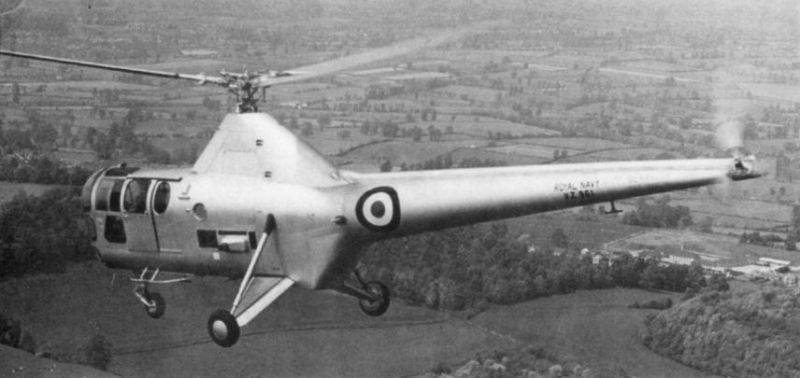
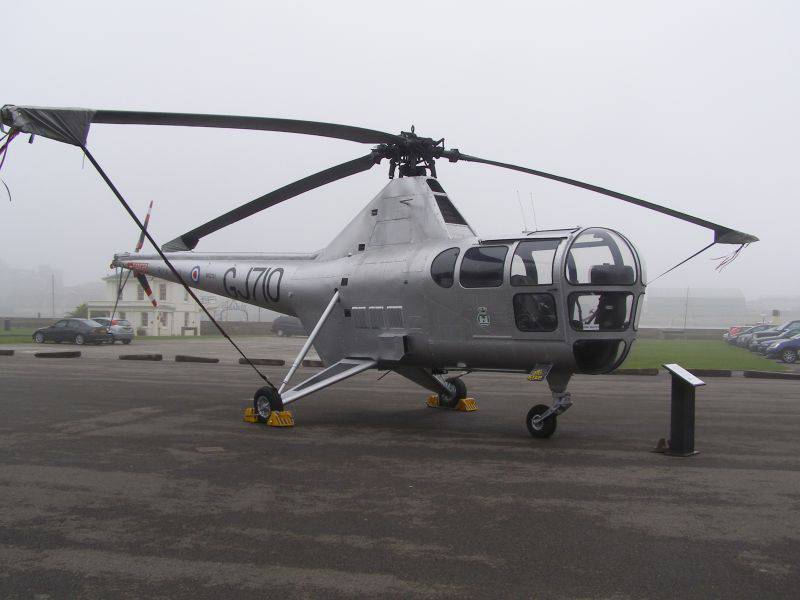
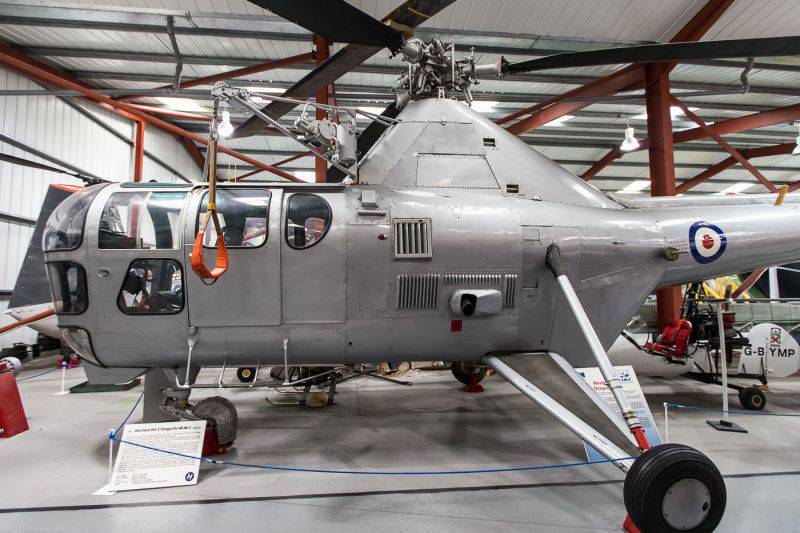
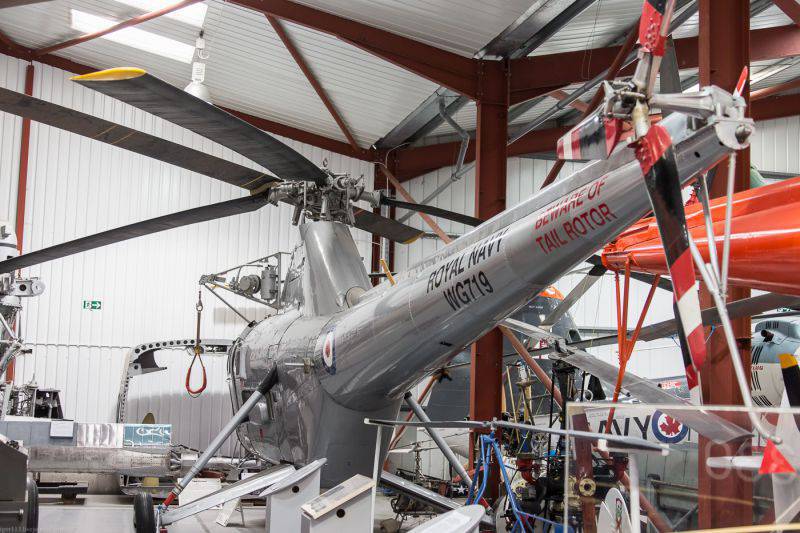
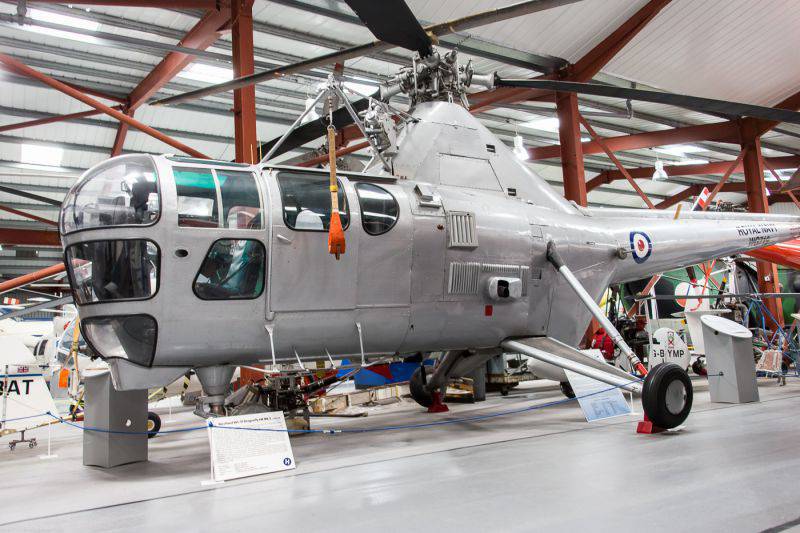
Information